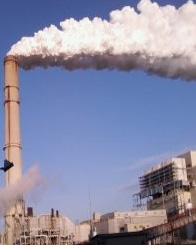Combustion Tuning and Pollution Control Optimization
 The engineers and technicians at CC&E specialize in examining and optimizing both combustion systems and pollution control equipment. These efforts can result in significant cost savings for the client. Modern fossil fuel burning power plants are equipped with combustion modifications that stage combustion in order to reduce the formation of nitric oxides (low NOx burners, overfire air, and reburn systems). These additions complicate the already challenging task of efficiently burning fossil fuels. Post combustion pollution control technologies to reduce nitric oxides, sulfur dioxides, opacity, particulates, fouling/slagging, mercury and carbon dioxide add additional complexity to power plant operations.
The engineers and technicians at CC&E specialize in examining and optimizing both combustion systems and pollution control equipment. These efforts can result in significant cost savings for the client. Modern fossil fuel burning power plants are equipped with combustion modifications that stage combustion in order to reduce the formation of nitric oxides (low NOx burners, overfire air, and reburn systems). These additions complicate the already challenging task of efficiently burning fossil fuels. Post combustion pollution control technologies to reduce nitric oxides, sulfur dioxides, opacity, particulates, fouling/slagging, mercury and carbon dioxide add additional complexity to power plant operations.
The typical combustion feedback to plant operations consists of little or no data for fuel flow distribution, and air flow information is often limited to damper position indication. Post combustion feedback is usually 4-6 oxygen readings, plus stack NOx and opacity. The feedback from post-combustion pollution control systems typically includes a single-pollutant measurement device before and after treatment as well as an injection rate indication.
CC&E’s testing capabilities provide superior feedbacks on the combustion process. These testing capabilities, combined with our understanding of combustion and pollution control systems, makes CC&E effective at optimization. We use superior feedback to understand the situation and how it is affected by control changes.
CC&E’s Approach to Gas Sampling and Data Acquisition
Our typical feedback consists of a grid or multiple grids of 24 to 96 probes, through which gas samples are drawn under vacuum to one of our test trailers. The flue gas sample is then analyzed for O2, CO and NOx using rack-mounted, Protocol-1 calibrated analyzers. A PLC-controlled switching system and an automated data acquisition system allow us to quickly cycle through the probe grid, providing real-time gas analysis at each grid point. Upon completion of a grid traverse, a contour plot of the data is generated providing an insightful look at the spatial distribution of the gas constituents. In addition to gaseous analysis, we provide additional measurements specific to the requirements of the project (NH3, SO3, SO2, temperature, flyash carbon, flyash loading, etc).
During a project we take the time to record and examine data including visual furnace observations. Typical plant Operations departments do not have the manpower to dedicate to studies of this nature. Often OEMs do not have sufficient test equipment or experience to optimize their own product.
At CC&E our engineers and technicians have an average of 15 years of experience conducting optimization projects for combustion systems, combustion modifications, and pollution control systems, including many systems our engineers have designed and installed.


